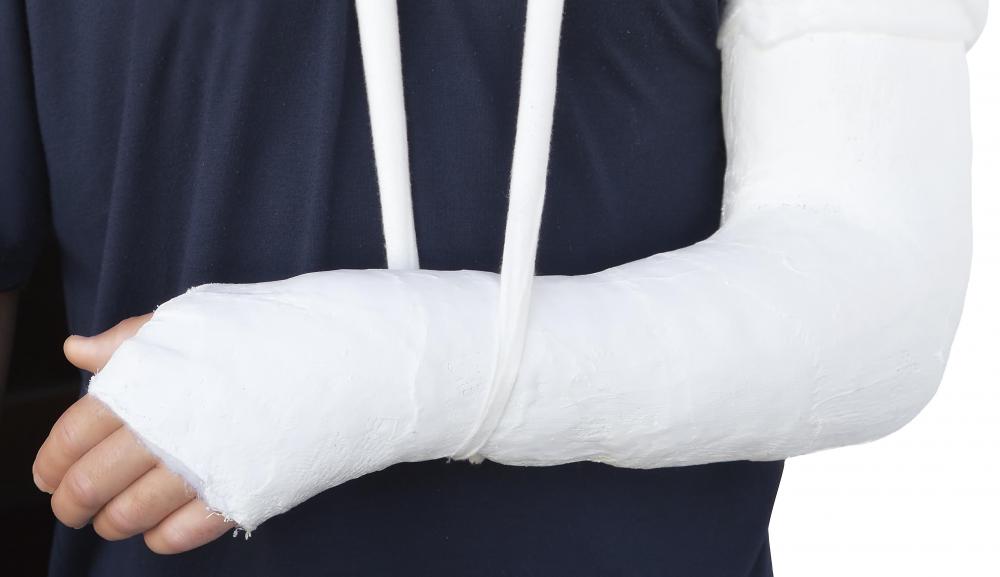At WiseGEEK, we're committed to delivering accurate, trustworthy information. Our expert-authored content is rigorously fact-checked and sourced from credible authorities. Discover how we uphold the highest standards in providing you with reliable knowledge.
How Do Doctors Treat a Transverse Fracture?
A transverse fracture occurs when a bone has broken perpendicular to its the length. These breaks are usually very serious and must be treated by a doctor to ensure proper healing. After taking x-rays, a doctor will realign the bone, if necessary. Some fractures may require surgery, and all of them will need to be immobilized.
An x-ray is usually necessary after any type of bone fracture, including a transverse fracture. Pictures of the bones allow doctors to see the extent of the damage, as well as any other damaged bones. Some parts of the body, such as with the forearm or lower leg, have a pair of bones. If just one of them is broken, it is known as a single fracture. When both of these bones are broken, it is known as a compound fracture.

A closed fracture occurs when the ends of the broken bone do not break the skin. Sometimes, the broken bone can break through the skin. This is known as an open fracture, and sometimes a doctor will be able to determine if it is a transverse fracture simply by looking at the ends of the bones sticking out.
After a doctor determines the extent of the damage, the ends of the broken bones often need to be realigned to their original positions. In the event of a closed fracture, the bones are typically realigned by maneuvering them back into place, often with the aid of an x-ray. It is often very painful and may require general anesthesia, especially with children.

Sometimes with a transverse fracture, the bones must be realigned during a surgical procedure, which is known as an open reduction. During an open reduction, an orthopedic surgeon will make an incision in the skin near the fracture. He will then manually move the bones back together. Sometimes, the bones must be held in position with metal screws or pins.

When the ends of the bones are realigned, the area must be immobilized. This usually involves a cast. The area will be wrapped in a casting material, which will harden, immobilizing the area. Casting is very important, especially with a transverse fracture, which can take months to heal.
Before being released from the hospital, the patient will often be given a prescription for pain medication, as well as instructions on how to care for the cast. A cast must be kept dry to prevent growth of certain bacteria and fungi. It is also important that weight not be put on the area. For example, if a patient is healing from a compound transverse fracture of the lower leg, he should not walk on it at all. This could possibly slow the healing time.
AS FEATURED ON:
AS FEATURED ON:













Discussion Comments
How a physician might chose to treat a transverse fracture also strongly depends on the age of the patient. In fact, the first question to help determine treatment is often, "Is this a pediatric fracture or an adult one?"
The reason this question is so important to the treatment of a transverse fracture is the natural growth potential of a child's bone as compared to that of an adult. In other words, a child's body is programmed to lay down bone -- frequently and profusely -- as part of his or her natural growth stages. Adults, on the other hand, have a much slower pace of bone cell application.
How does this determine how a doctor might treat a transverse fracture? According to an orthopaedic surgery website, the bone realignment process discussed in the article can be less precise for a child than for an adult because of a child's natural bone growth. Thus, some fractures that might require surgery for an adult might only be treated with realignment by x-ray and casting for a child.
Finally, treatment of any fracture entails discharge instructions for the patient's discharge and return home. Adults typically require encouragement to maintain activity while children often require some instruction on why they need to temporarily curtail their physical play.
Post your comments